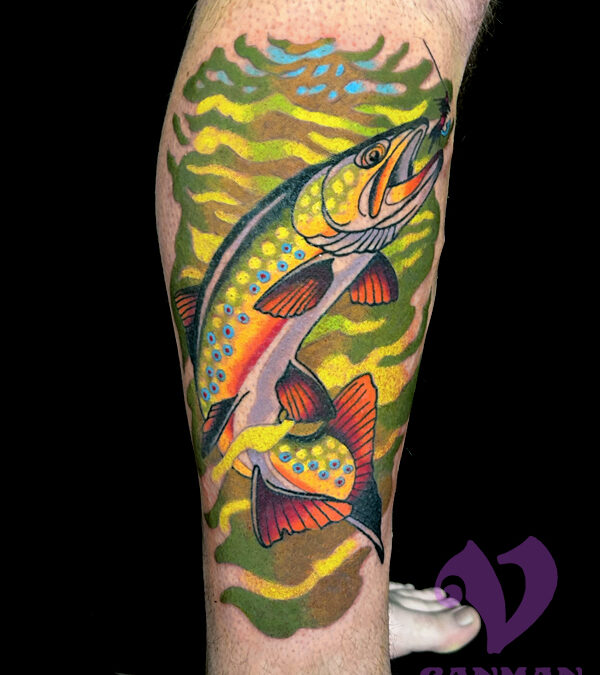This Fishing tattoo done by Canman is a great example of an illustrative tattoo.
The client wanted a brook trout and wanted to give it a feeling of movement.
As a result, Canman used the curved body composition to create this effect.
Illustrative tattoos include anything that looks like you might find in a book illustration or drawing.
And just as there are many kinds of art style, there are many kinds of illustrative tattoos.
Illustrative tattoos take inspiration from both traditionalism and realism.
This style typically use solid black outlines, much like traditional tattoos, and may be colorful or simply black.
The key is that it retains a drawn, animated feel, rather than being shaded to look photo-realistic.
This gives artists and clients a lot of flexibility to design either a simple illustration or a complex, abstract piece.
Most use a muted color palette to create soft transitions, rather than the bold contrast of a traditional tattoo.
Creativity and a touch of whimsy are key ingredients to these tattoos.
Interested in a Fishing tattoo with an illustrative style?
Fill out our Tattoo request form to get your project started!!
About brook trout
The brook trout is a beautifully colored fish with yellow spots over an olive-green back.
Also, the spots along the trout’s back are stretched and almost wormlike in shape.
The brook trout’s color transitions from olive to orange or red, with scattered red spots bordered by pale blue.
Its lower fins are orange or red, each with a white streak and a black streak, and its underside is a milky white.
A brook trout usually reaches 9 to 10 inches in length.
Brook trout are found throughout Canada and the northeastern United States.
In addition, their range extends as far south as the Appalachian Mountains in North Carolina and as far west as Minnesota.
They are often found in clean, cool mountain streams, and are most active around dawn and dusk.
During the day, brook trout may retreat to deeper waters.
Brook trout spawn in the fall and hatching occurs in January.
By the end of their first summer, juvenile brook trout are typically about three to four inches long.
On average, a brook trout lives two to three years.
